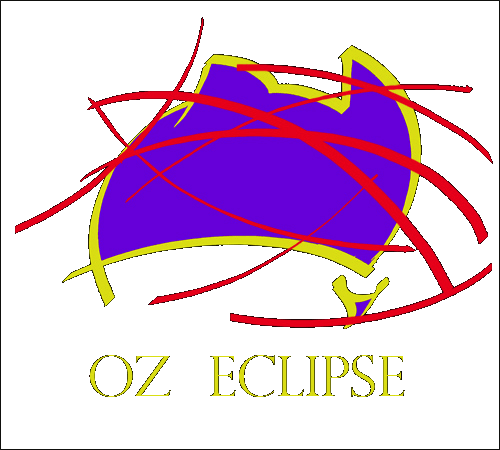
 |
WAITING FOR THE
SHADOW
SOLAR AND LUNAR ECLIPSE OBSERVINGFUTURE EXPEDITION & EVENT PLANNING |
|
|
|
|
|
|
|
|
|
In the Sino Bay region between Shanghai and Hangzhou the Sun will rise a little after 5am local time. The partial eclipse will begin at 8:21am in Hangzhou, a few minutes later in Shanghai depending where in the city or surrounds you are located. The partial eclipse will proceed for 1hr13m. Second contact, the beginning of totality occurs at 9:34am in Hangzhou, 9:37am in Shanghai.
Towards the end of the partial eclipse, about five minutes before the beginning of totality the solar crescent will be getting very thin making shadows very sharp edged. Under trees you will see a sea of solar crescents. Hold your hand at about shoulder height above the ground. Look at the shadow. Does it have claws? If not, rotate your hand until the claws appear. The tips of your fingers are diffracting the solar crescent causing this apparition and so the angle of your fingers needs to be just right.
Don't forget to keep an eye on the western horizon. At some point, a dark blue band will appear on the horizon. This is the Moon's shadow projected onto the atmosphere. The time this shadow appears on the horizon depends very much on eclipse geometry. In the Gobi desert in 2008, it appeared only twenty seconds before totality. The geometry this July is very different. The shadow is moving at 1.1km/s; about three times faster than a passenger jet. The Sun is high in the eastern sky. So if the shadow becomes visible 100km away, you might spot the shadow 100-200 seconds before totality.

I'll personally start checking from at least 5 mins before totality onwards. The shadow will swallow up the sky, slowly at first, accelerating rapidly as the shadow passes overhead. As it passes overhead, it will cross the sky three times faster than a passenger jet. When the leading edge of this shadow contacts the position of the Sun high in the eastern sky, totality begins. Fifteen seconds before totality begins, remember to remove solar filters from your equipment. Right in the middle of when everything is happening so quickly. Watch the ground for shadow bands - light and dark bands about 20cm wide. Oh yeh, you'll have to do this at the same time as you are looking up watching the lunar shadow crossing the sky. Did I say this would be easy?
Get ready, 5, 4, 3, 2, 1. Baily's beads are small bright flashes of light that appear around the solar disk at the same time as YES, YES, YES, the Diamond ring! Wow!

It takes your breath away and you forget to do whatever else you are supposed to do. Now the fast pace slows right down. As the diamond ring disappears you see the corona appear. At first it is a narrow ring surrounding the dark lunar disk. Close to the lunar limb on the eastern limb of the dark disk you will briefly see a bright pink glow. This is the chromosphere. You might also see bright red points of light even with the naked eye. These are prominences. Have a look at them now because the Moon will cover them over as the eclipse progresses. As your eyes adapt to the darker lighting conditions the corona grows and grows and grows.

Depending on the current level and type of activity in the corona and your local sky conditions it may end up being between four and twelve times the Sun's diameter. When you get sick of staring at the corona, drag your gaze off the corona and look around. Can you see any stars or planets? Look at the whole dome of the sky. It is difficult to predict what effect air pollution will have on the distribution and intensity of sky colour. If it doesn't have too big an effect then the sky will be a deep twilight blue overhead and deep crimson near the horizon possibly with hues of orange and yellow in between. The crimson sunset won't just be in one part of the sky. With an overhead eclipse like this the crimson colour will be all around the horizon. The big dark blue patch covering most of the sky is the Moon's shadow and the crimson red fringe on the horizon to the north and south is sunlight striking the atmosphere a hundred or so kilometres away where they aren't seeing a total eclipse. The crimson red fringe on the horizon to the west is sunlight from a hundred or so kilometres away where the eclipse has just ended and to the east west is sunlight from a hundred or so kilometres away where the eclipse is about to begin.
Enjoy this time, because it won't last long. The end of totality is signalled by prominences and the chromosphere appearing on the west limb of the Moon. Third contact, the end of totality is marked by a second diamond ring that is much more vivid and brilliant than the first. The second diamond ring seems brighter because your eyes have been adjusting to the dark for the last few minutes but it is exactly the same. Look to the east to watch the receding shadow and to the ground to look for and shadow bands. The partial eclipse takes another 1hr20mins to completion; seven minutes longer than the ingress eclipse due to the change the Earth Moon geometry.